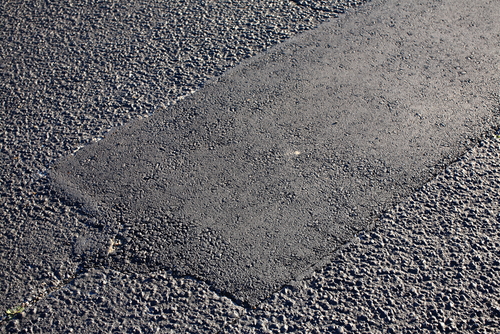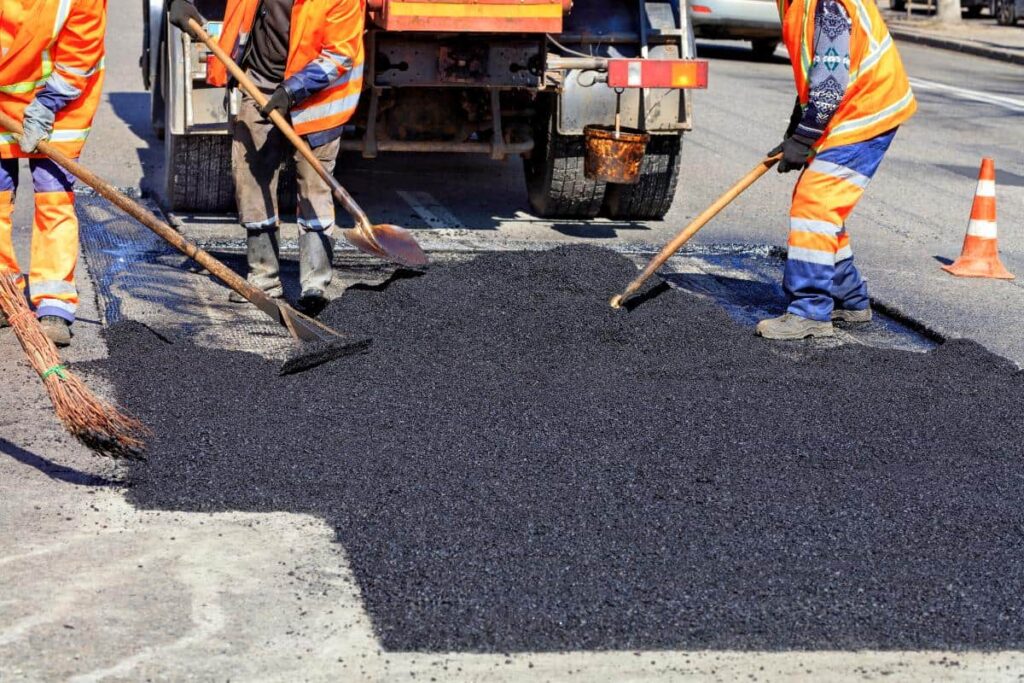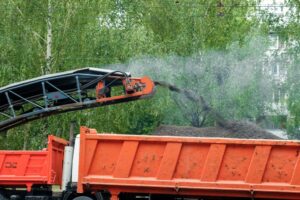Keeping your asphalt pavement in good condition is key to avoiding costly repairs or replacement. Asphalt sealing and repair encompasses a variety of techniques. Two of the most common techniques are crack sealing and patching. But when do you use each technique? What’s the difference between the two?
In this article, we outline the differences between asphalt crack repair and sealing and asphalt patching and repair.
Difference Between Crack Sealing and Patching
The key difference between crack sealing and patching lies in their purpose and approach. Crack sealing is a preventative maintenance process that involves filling cracks in asphalt with a specialized sealant to prevent water and debris infiltration, which can lead to further pavement deterioration. It is ideal for addressing smaller cracks and prolonging the lifespan of the pavement.
On the other hand, patching is a repair method used for fixing larger, more severe damage such as potholes or failed areas of asphalt. Patching typically involves removing the damaged section and replacing it with new asphalt, providing a more structural fix to compromised pavement areas. Both methods play important roles in asphalt maintenance but serve different needs based on the extent and type of damage.
The Enemy: Water Damage
The main culprit behind asphalt pavement problems is water. Water can seep into even the smallest cracks on the surface, acting like a tiny wedge that grows wider over time. As temperatures drop and the water freezes, it expands with incredible force, putting immense pressure on the surrounding asphalt. This freeze-thaw cycle weakens the asphalt’s internal bonds, causing the cracks to widen and potentially break apart entirely. Left unchecked, this process can quickly transform minor cracks into a web of fissures, eventually leading to the formation of potholes.
If left unaddressed for too long, this progressive deterioration can ultimately necessitate a complete repaving project, which is a costly and disruptive undertaking. By taking proactive measures to address and prevent water infiltration, such as crack filling, you can prevent this domino effect and safeguard the longevity and integrity of your asphalt pavement.
Crack Sealing: Keeping Water Out
There are a few different types of cracks when it comes to asphalt and each requires a specific type of repair. Asphalt crack sealing is a preventative measure used to address hairline cracks (typically less than ¼ inch wide) and minor pavement cracks. Crack sealing contractors use a liquid asphalt or hot sealant-type material, often called a hot pour sealant or asphalt emulsion, to fill the cracks. This creates a barrier that prevents water from seeping in and causing further damage. Crack sealing is a cost-effective way to extend the life of your asphalt pavement and prevent the need for more extensive repairs later.
Patching: Filling in the Gaps
Asphalt patching is used for larger cracks, potholes, and areas where the asphalt surface is broken or missing. Pavement patching and repair typically involves removing the damaged asphalt, filling the area with new asphalt material, and then compacting it to create a smooth, even surface. There are different types of asphalt patching materials available, including hot asphalt and cold patch asphalt.
Choosing the Right Option
So, how do you determine whether your pavement requires crack sealing or patching? Here’s a quick guide:
- Crack Sealing: Use crack sealing for hairline cracks, minor cracks, and as a preventative measure to stop small cracks from growing.
- Patching: Use patching for larger cracks (wider than ¼ inch), potholes, and areas where the asphalt surface is broken or missing.

When in Doubt, Call a Professional
If you’re unsure about the type of repair your asphalt surface needs, it’s best to consult with a professional asphalt crack sealing contractor or a company that specializes in asphalt patching and repair. They can assess the damage and recommend the most appropriate course of action.
By understanding the difference between crack sealing and patching and when to use each, you can take steps to properly maintain your asphalt surfaces and repair cracks now to prevent costly large-scale repairs in the future. Remember, a little preventative maintenance today can go a long way in extending the life of your asphalt pavement.
Is your asphalt parking lot or driveway in need of repairs? Contact Sipes today! No job is too big or too small for our talented team. With more than 10 years of experience in commercial paving and pavement repairs in Indianapolis and the surrounding area, we understand what it takes to ensure your asphalt can stand up to Indiana’s wild weather.
Contact us today to learn more and get your FREE quote!




